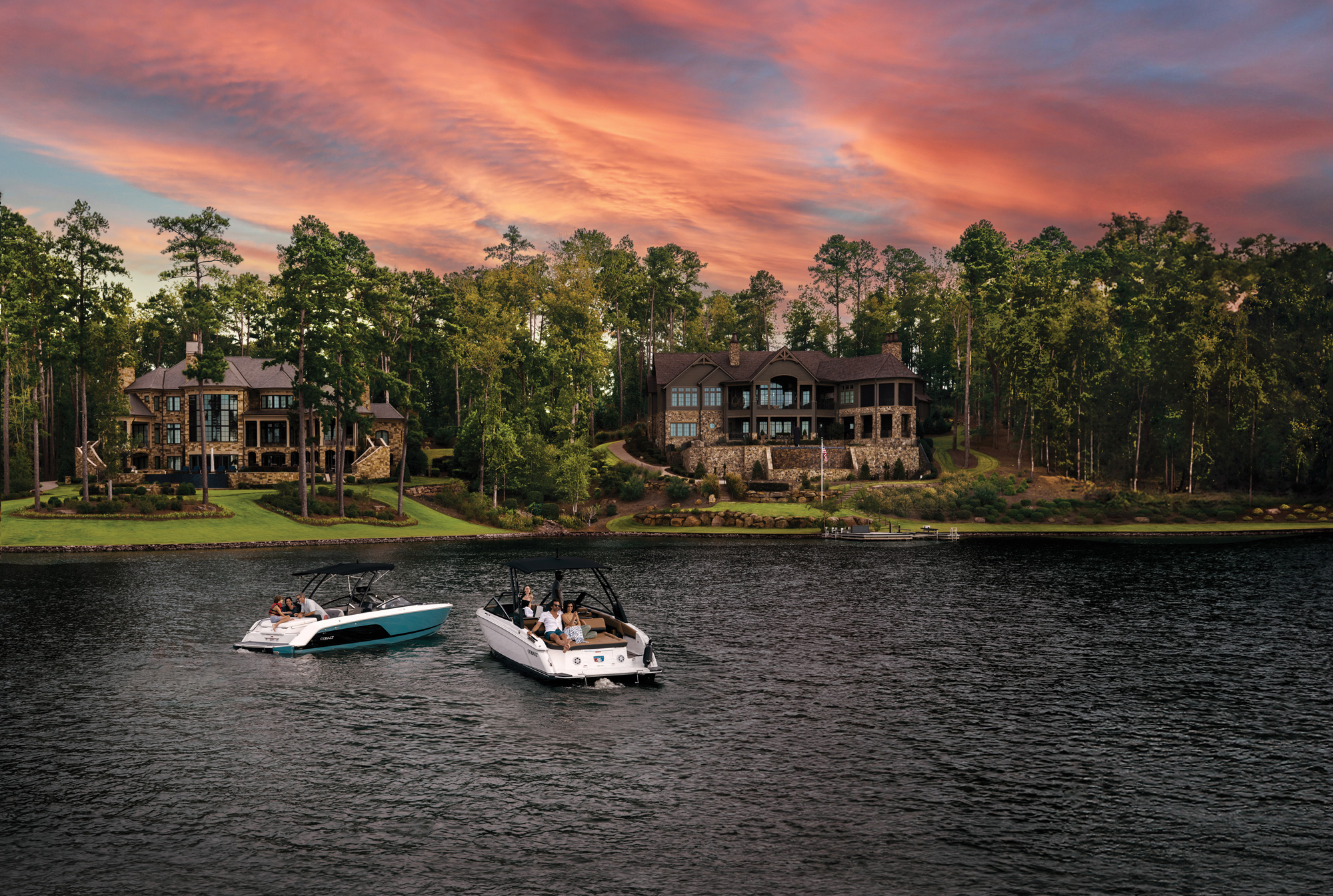
entley is reaching a new level of exclusivity with the launch of its powerful and seductive Bacalar, with only 12 models being produced and each one comprehensively customized. It is a two-seater that carries on a Bentley tradition that took hold 100 years ago
It is easy to say with a century of hindsight, but the Whitsun Junior Sprint Handicap at Brooklands racetrack on May 16, 1921 was not a fair contest, not with W.O. Bentley’s recently built EXP2 on the starting line.
In this fast-evolving, formative inter-war period of motor-racing, “Sprint Handicaps” were run over distances of two miles, 5 3/4 miles or 8 1/2 miles. This Whitsun sprint was over the shortest two-mile measure; a real test of torque and acceleration off the line with a thunderous surge of mechanics and human spirit intertwined.
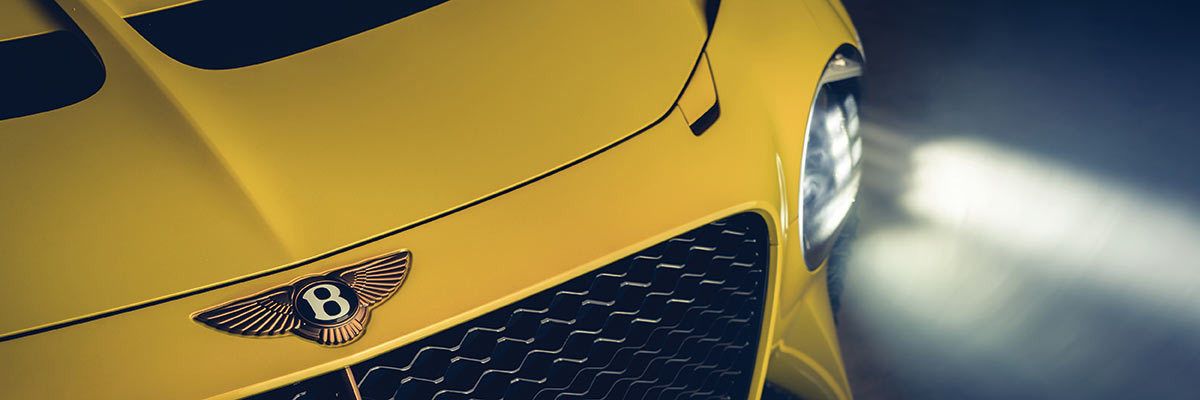
Frank Clement was behind the wheel of the EXP2 that day (“EXP” the abbreviation of “Experimental”) and he had worked closely with W.O. on building the EXP2. It was literally only the second car W.O. had ever built, and parts of his first car—that’s right, the “EXP1”—are likely to have made their way into the EXP2 upgrade.
There was only one single EXP1 ever built and only one succeeding EXP2. Known universally as “W.O.”, Walter Owen Bentley was an engineer and former car salesman who was just establishing his new business, based in a small factory in Cricklewood, North London, and the only Bentley production line at this time was in W.O.’s dreams.
So the Whitsun Sprint Handicap at the Brooklands racetrack to London’s south-west was a hugely significant, early test of Bentley’s latest creation. The test did not last long, in the best possible way. The EXP2 reached the checkered flag in just under one minute and 40 seconds, winning by a staggering 13 seconds. The EXP2 completed the race with an average speed of 72.5mph, in an era when racing drivers knew the exhilaration of raw speed on the track—that elevation of the senses—at around 40mph.
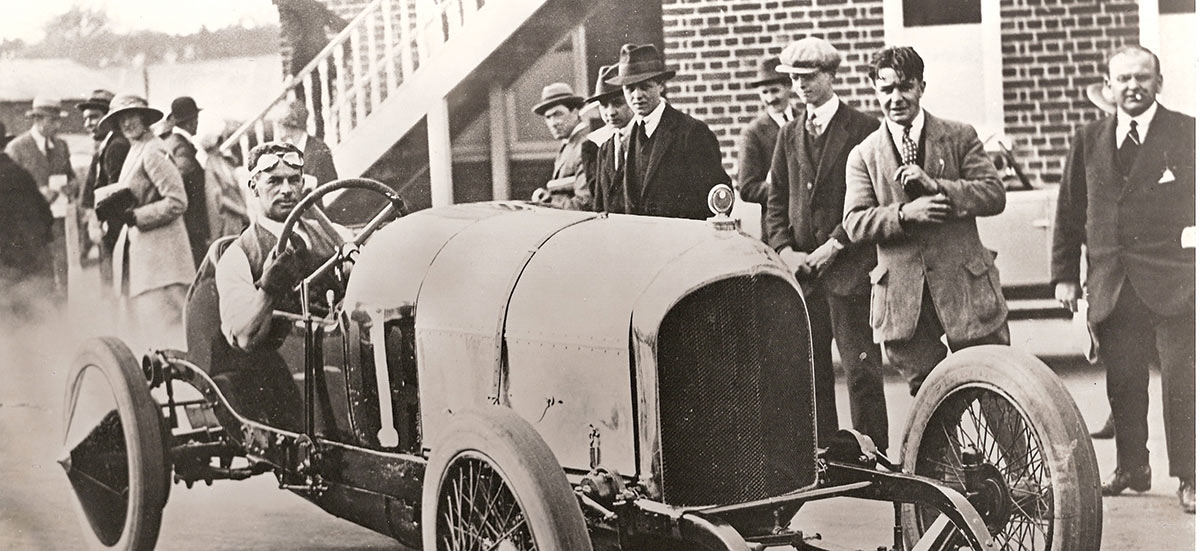
“That three-litre Bentley engine in the EXP2 is a marvel for an engine made in 1920,” starts Mike Sayer, Head of the Bentley Heritage Collection, a collection which features this one and only EXP2, 100 years on. “It had a lot of features that had never been brought together in one engine before: a single overhead cam-shaft, the mono-bloc construction, twin magnetos, twin-spark ignition, four-valves per cylinder, aluminium pistons.”
Such was W.O.’s ingenuity that he had redesigned the engine of the famous Sopwith Camel single-seat fighter bi-plane used by British forces in the First World War. Throughout his career, W.O. stuck to the following three principles: reliability first, refinement second and power third. Power was never at the expense of the other two and the reliability of the EXP2 was illustrated by a racing record that would soon total an exceptional 11 wins.
“EXP2 is the oldest surviving Bentley in the world,” adds Sayer, as the centenary of that first victory approaches. “It was the first Bentley to go racing and the first to win. We still own it, it is taxed and tested and it starts at the press of a button. It is an amazing car and it is on display at the factory in Crewe [in north-west England].”
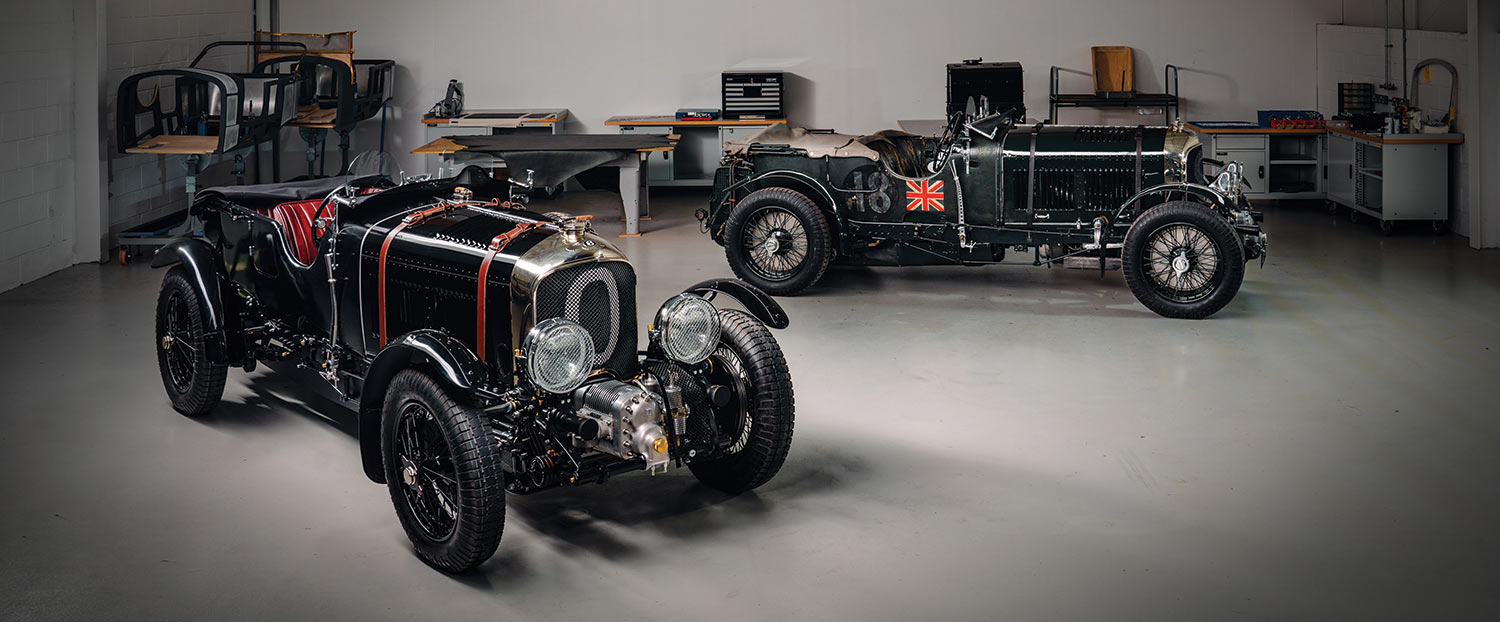
Automotive engineering evolved at super-charged pace through the 1920s, to the extent that by the turn of the ’30s the Bentley race car turning heads, the legendary Blower Team Car, nearly doubled the EXP2’s top speed.
“The Blower broke the Brooklands lap record, reaching just shy of 140 miles per hour in the late 1920s, which was an extraordinary speed,” explains Sayer.
“It is a beautiful race car. It is a brute of a machine but it has the hallmarks we still recognise in modern Bentleys today. It was built with incredible quality and attention to detail, it was astonishing to drive and there were not many cars back then that brought 240 horsepower.”
When, two years ago, Bentley considered a vintage model to reincarnate for the company’s first ever Continuation Series, it had to be the Blower, particularly when the one in Bentley’s Heritage Collection is the Team Car No. 2—better known as the “Birkin Blower”—which is the exact car raced at Brooklands and Le Mans by Bentley’s most famous pre-war driver, Sir Tim Birkin.
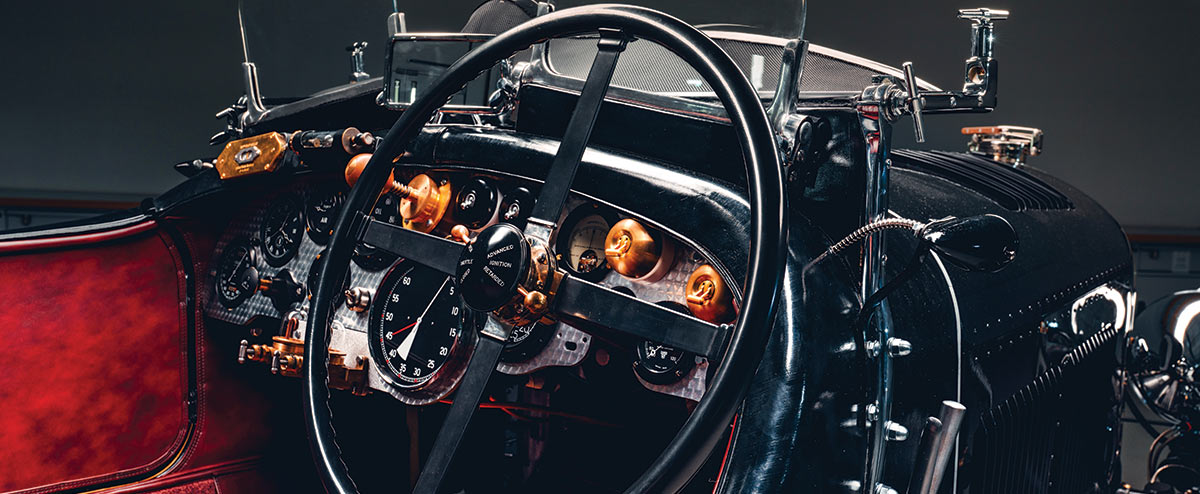
Mulliner—the arm of Bentley responsible for bespoke car production—is currently crafting a Continuation Series of only 12 Blower Team Cars, representing the first time any manufacturer has embarked on a revival of a pre-war model. The original Birkin Blower was disassembled completely, every part laser-scanned so 12 copies could be made of each one, and the Continuation Series is currently in production.
The cars “are as close as possible to the original,” adds Sayer. “There are some areas where the materials had to be tweaked just to make sure they are safe, but apart from that they are faithful to the original design and the original drawings and the data we gathered from our Blower.”
And apologies if you are interested in buying one: All 12 cars, with an array of custom options to ensure individuality, were spoken for prior to production. They sold out immediately despite total costs upwards from $2.5 million each.
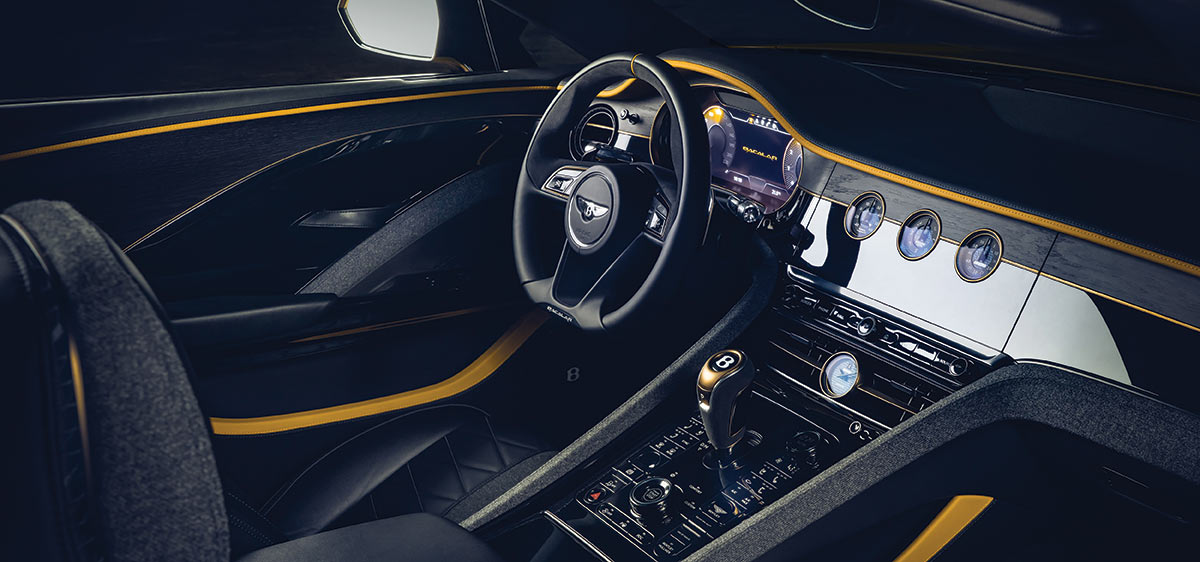
The revival of the factory is being counter-balanced by another ultra-premium introduction: the Bacalar. While the Blower represents the pinnacle of racing prestige from 1929, the Bacalar is the first manifestation of Bentley Mulliner’s contemporary coachbuilt offering. The Bacalar shares much in common with the Blower: only 12 are being built, they sold out prior to production, the car boasts a wide range of custom options to ensure each car is clearly bespoke, and each Bacalar will roll out to the tune of $2.5 million.
“What we are doing with Mulliner is progressing the Bentley offering yet doing it in quite a traditional way, through coach-building, which was such a fundamental part of the business back in the ’20s,” explains Sayer. “We are delighted these cars went so quickly and there is huge demand for this kind of very exclusive project. These customers have been really involved from the outset and they see updates before they are announced publicly. The 12 Bacalars are all so different because customers have picked more than just the colour of the leather and the paint; it goes right down to the finish on the metal surfaces and the veneers and the way the colors work across the car. Each car is a genuine, individual expression.”

The most exclusive Bentley of the modern era, the sleek yet uncompromising two-seat, two-door, open-top Bacalar is powered by a 6-litre, 12-cylinder engine and features Bentley’s innovative Active All-Wheel-Drive System to ensure peerless handling and performance.
The Bacalar combines power and elegance to stunning effect, just as the Blower Team Car did in 1929, and the EXP2 before it. Times change, but some things stay the same.
Follow Us On


| Cookie | Duration | Description |
|---|---|---|
| cookielawinfo-checkbox-analytics | 11 months | This cookie is set by GDPR Cookie Consent plugin. The cookie is used to store the user consent for the cookies in the category "Analytics". |
| cookielawinfo-checkbox-functional | 11 months | The cookie is set by GDPR cookie consent to record the user consent for the cookies in the category "Functional". |
| cookielawinfo-checkbox-necessary | 11 months | This cookie is set by GDPR Cookie Consent plugin. The cookies is used to store the user consent for the cookies in the category "Necessary". |
| cookielawinfo-checkbox-others | 11 months | This cookie is set by GDPR Cookie Consent plugin. The cookie is used to store the user consent for the cookies in the category "Other. |
| cookielawinfo-checkbox-performance | 11 months | This cookie is set by GDPR Cookie Consent plugin. The cookie is used to store the user consent for the cookies in the category "Performance". |
| viewed_cookie_policy | 11 months | The cookie is set by the GDPR Cookie Consent plugin and is used to store whether or not user has consented to the use of cookies. It does not store any personal data. |